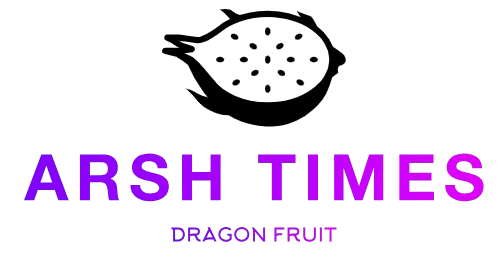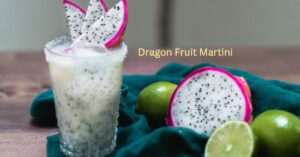
Discover the fascinating world of intergeneric hybridization in cacti. This cytogenetic study explores the genetic makeup of triploid and aneuploid hybrids, shedding light on plant evolution, breeding challenges, and potential breakthroughs in cactus cultivation.
Introduction
The cactus family (Cactaceae) is renowned for its diverse, resilient, and visually striking species. Among them, vine cacti, including Hylocereus, Selenicereus, and Epiphyllum, have gained popularity not only for their ornamental appeal but also for their commercial significance in fruit production.
Intergeneric hybridization—the crossing of species from different genera—offers exciting opportunities for breeding novel cactus varieties with enhanced traits. However, it also presents significant genetic and reproductive challenges, particularly when it results in triploid or aneuploid hybrids.
This study delves into the cytogenetics of intergeneric hybrid cacti, examining how chromosomal abnormalities impact hybrid fertility, plant development, and genetic stability. By understanding these mechanisms, we can unlock new possibilities for cactus breeding, genetic research, and conservation efforts.
The Challenges and Potential of Intergeneric Hybridization
What Is Intergeneric Hybridization?
Intergeneric hybridization occurs when species from different genera crossbreed, combining genetic material from distinct evolutionary lineages. While this process can result in unique and valuable hybrids, it is often hindered by reproductive barriers at multiple stages.
Key Barriers to intergeneric hybridization
1. Pre-Zygotic Barriers (Before Fertilization)
Pollination Incompatibility – Differences in flower shape, pollen structure, and blooming times can prevent successful fertilization.
Gametic Incompatibility – Even when pollination occurs, genetic mismatches between pollen and ovules may prevent fertilization.
2. Post-Zygotic Barriers (After Fertilization)
Hybrid Inviability – Some hybrid embryos fail to develop or die prematurely due to genetic imbalances.
Hybrid Sterility – Even if hybrids survive, chromosomal abnormalities can lead to reduced fertility or complete sterility.
Why Intergeneric Hybridization Matters
- Developing New Cultivars – Hybrid cacti can display superior disease resistance, enhanced fruit quality, or unique ornamental traits.
- Understanding Evolutionary Mechanisms – Studying hybrid genetics helps scientists uncover the evolutionary pathways and genetic interactions that drive speciation.
- Expanding Genetic Diversity – Hybridization can introduce new genetic material, increasing biodiversity within cultivated and wild cacti populations.
Despite its challenges, intergeneric hybridization remains a powerful tool for plant breeders and researchers. By overcoming genetic obstacles, we can create new varieties with desirable traits, benefiting both horticulture and agriculture.
Cytogenetic Analysis: Unlocking the Secrets of Hybrid Genetics
Cytogenetics—the study of chromosomes and their role in heredity—is essential for understanding how hybrid cacti develop and reproduce. This study utilized advanced cytogenetic techniques to analyze triploid and aneuploid hybrids, shedding light on their genetic composition and reproductive potential.
Key Cytogenetic Techniques Used
Chromosome Counting – Determines whether hybrids are diploid, triploid, or aneuploid, revealing potential chromosomal imbalances.
Meiotic Analysis – Examines chromosome behavior during cell division to detect segregation errors, chromosome bridges, or pairing irregularities.
Fluorescence In Situ Hybridization (FISH) – A molecular technique that identifies specific DNA sequences on chromosomes, aiding in the detection of structural abnormalities.
These methods provide critical insights into how hybrid cacti inherit and express genetic traits, helping breeders develop more viable and fertile hybrids.
Triploid and Aneuploid Hybrids: The Genetic Complexities
1. Triploid Hybrids
Triploids (3n) arise when a diploid (2n) and a tetraploid (4n) parent cross, resulting in offspring with three sets of chromosomes.
Common Issues:
Irregular Chromosome Segregation – During meiosis, triploids struggle to form balanced gametes, leading to reduced fertility or sterility.
Hybrid Vigor – Some triploids exhibit enhanced growth and resilience, making them valuable for ornamental breeding.
2. Aneuploid Hybrids
Aneuploids have abnormal chromosome numbers (e.g., 2n+1 or 2n-1), often caused by errors in chromosome segregation during meiosis or fertilization.
Common Issues:
Developmental Abnormalities – Aneuploids may display irregular growth patterns, reduced vigor, or morphological defects.
Genetic Instability – These hybrids often experience chromosomal rearrangements, leading to unpredictable traits in subsequent generations.
Despite these challenges, some aneuploid hybrids retain partial fertility, making them valuable for experimental breeding programs.
| Hybrid Cross | Ploidy | Chromosome # (2n) | Key Meiotic Observations | Fertility |
| Species A x Species B | Triploid | (e.g., Multivalents, Univalents) | (e.g., Semi-fertile) | |
| Species C x Species D | Aneuploid | (e.g., Chromosome lagging) | (e.g., Sterile) | |
| Species E x Species F | Triploid | |||
| Species G x Species H | Aneuploid |
Implications for Cactus Breeding and Evolution
1. Overcoming Hybrid Fertility Barriers
Plant breeders can selectively breed semi-fertile hybrids, stabilizing their chromosome numbers over multiple generations. Techniques like chromosome doubling (using colchicine) can restore fertility by converting triploids into tetraploids, which can then cross successfully with diploid species.
2. Advancing Genetic Research
Cacti serve as a model group for studying polyploidy and genome evolution. Research on triploid and aneuploid hybrids helps scientists understand how chromosomal changes drive species diversification.
3. Expanding Commercial Applications
Fruit Production – Hybridization may lead to high-yielding dragon fruit (Hylocereus) cultivars with improved disease resistance.
Ornamental Breeding – Unique hybrids with rare flower colors and growth forms could dominate the succulent and houseplant markets.
By combining traditional breeding techniques with modern cytogenetics, we can push the boundaries of cactus cultivation and genetic innovation.
Conclusion:
The Future of Cactus Hybrid Research
Intergeneric hybridization in cacti presents both challenges and opportunities. While triploid and aneuploid hybrids often struggle with fertility issues, they provide valuable genetic insights that can be leveraged for plant breeding, conservation, and evolutionary studies.
By harnessing cytogenetic techniques, breeders and researchers can unlock the potential of these unique hybrids, paving the way for new cactus varieties with improved traits and expanded genetic diversity.
The Takeaway: Continued research in cactus genetics and hybridization will be key to developing sustainable, resilient, and commercially viable plant varieties in the future.





